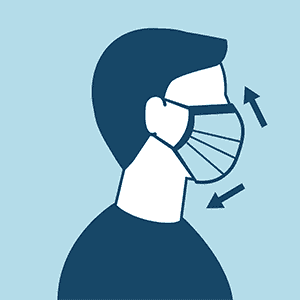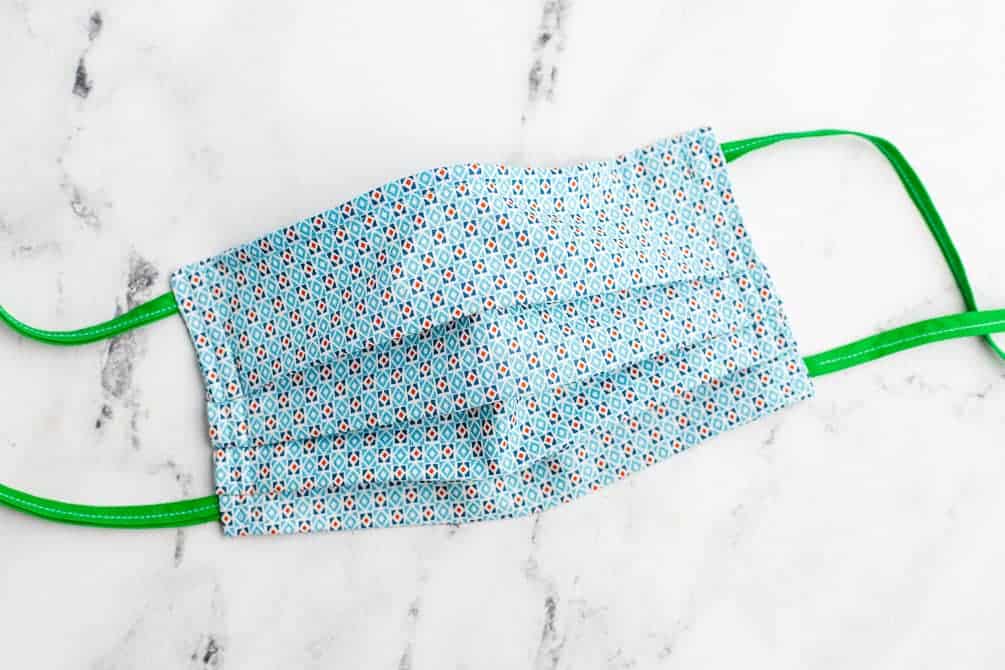The conversation around facemasks has shifted dramatically, and most health organizations are now advising people to use face masks — even homemade ones, as a last resort. From cotton shirts to vacuum bags, we looked at the best candidates.
If you don’t want to read everything, skip to the end for the conclusion (but please do read).

The CDC has significantly changed its advisory on face masks. Not only is it recommending that people use masks, it even recommends using DIY cloth masks as a resort to slow down the spread of the disease — with indications on how to sew and disinfect them.
It’s vital to keep masks sterilized and use them properly at all times; otherwise, they can do more harm than good. This being said, let’s what materials can make for good masks.
Does light pass through it? Probably not good
A simple test to see what materials can make a good mask is to keep it over a bright light. Does light pass through it easily? Then it’s probably not a good material as it’s not dense enough.
But if the material is too dense, you’re not going to be able to breathe through, so it means it’s not really wearable.
So the material needs to be dense enough to capture viral particles, but also needs to be breathable. A range of household materials can be used in this regard.
Existing science
There is, actually, an earlier study assessing the effectiveness of different materials as face masks.
“Several household materials were evaluated for the capacity to block bacterial and viral aerosols. Twenty-one healthy volunteers made their own face masks from cotton t-shirts; the masks were then tested for fit. The number of microorganisms isolated from coughs of healthy volunteers wearing their homemade mask, a surgical mask, or no mask was compared using several air-sampling techniques” — the study abstract reads.

According to the study, several materials can provide modest protection against aerosol-transmitted viruses, including cotton T-shirts, tea towels, and silk.
There are a few important caveats. The 2013 study focused on influenza, not COVID-19, it’s not a particularly big study, and there are a number of considerations (such as how well the masks fit). Even so, at this moment, it’s one of the best indications. So here’s what the researchers found.
Vacuum bags and tea towels: good filtering, bad masks

All the materials tested showed some capability to block
the microbial aerosol challenges. According to the study, a properly made mask from a vacuum bag is almost as good as a surgical mask (not that surgical masks are perfect). Tea towels also had high filtration.
However, the materials likely don’t make for good masks because they’re stiff and exhibit a high pressure drop.
“The bag’s stiffness and thickness created a high-pressure drop across the material, rendering it unsuitable for a face mask,” the study reads.
Pillowcases and cotton shirts are good
Despite having a somewhat lower filtration rate, two other materials were deemed better for face masks: pillowcases and cotton shirts.
“The pillowcase and the 100% cotton t-shirt were found to be the most suitable household materials for an improvised face mask,” the researchers write.

For fitting purposes, stretchy cotton t-shirts work best.
“The slightly stretchy quality of the t-shirt made it the more preferable choice for a face mask as it was considered likely to provide a better fit.”
Even a scarf is better than nothing
Most of the benefits provided by these improvised masks come in the form of preventing the wearer from spreading his own germs rather than protecting the wearer from getting outside germs (though to a much lesser extent, they can also help with the latter).
In this regard, even a simple scarf was found to provide modest benefits, which goes in line with recent CDC recommendations.
However, the 2013 study emphasizes that improvised face masks are only a last-resort option.
“An improvised face mask should be viewed as the last possible alternative if a supply of commercial face masks is not available, irrespective of the disease against which it may be required for protection.”
When you draw the line, though, that’s exactly the situation we’re in now — a global pandemic, a highly contagious disease, and severe shortages of masks and other medical equipment.
“Improvised homemade face masks may be used to help protect those who could potentially, for example, be at occupational risk from close or frequent contact with symptomatic patients. However, these masks would provide the wearers little protection from microorganisms from other persons who are infected with respiratory diseases. As a result, we would not recommend the use of homemade face masks as a method of reducing transmission of infection from aerosols.”
More materials, more tests
A few other research groups have announced preliminary results about what materials can make good masks (although not yet peer-reviewed). Yang Wang, an assistant professor of environmental engineering at the Missouri University of Science, has worked with his graduate students to trial several materials. They looked not only on how different materials filter particles, but also how a different number of layers affects the filtration.
They found that when it comes to common materials, four folds offer far more protection than two folds. For instance, a pillowcase captured 22% of particles when it was folded in 2 layers — and 60% filtration in four layers. A woolen scarf filtered 21% of particles in 2 layers, and 48% in 4 layers.
Quilting can work wonders
Scott Segal, chairman of anesthesiology at Wake Forest Baptist Health, also studied how different materials behave as face masks. According to him, quilting can make pretty good masks — especially if it involves high-thread count cotton. The best homemade quilted masks that he studied were as good as surgical masks — or even slightly better, providing up to 79% filtration. However, the problem of breathability remains for thicker quilts.
However, Segal’s study also found that flimsy, loose fabric can offer as little as 1% filtration.
The bottom line
The best medical mask (the N95 respirator) filters out over 95% of particles as small as 0.3 microns. Unfortunately, we don’t have enough of those to go around for general use. Surgical masks, by comparison, filter around 60-80% of these particles.
Improvised masks, while far from ideal, can offer important protection when it comes to limiting the spread of COVID-19. According to the best scientific evidence available, the best bets are either thick cotton shirt or pillowcase material (folded 2-4 times), or thick but breathable quilts.
Face masks should be fit snugly and washed after every use. Individuals should be careful not to touch their eyes, nose, and mouth when removing their face covering and wash hands immediately after removing. A washing machine should suffice in properly washing a face covering. [no_toc]


